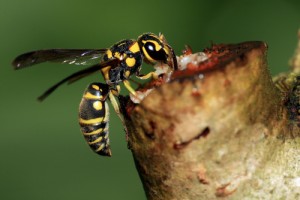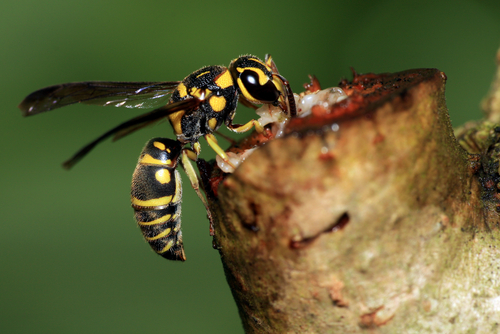 Researchers from the Institute for Biomedical Research (IRB Barcelona) have successfully managed to induce breast tumor cell death in vitro using wasp venom.
Researchers from the Institute for Biomedical Research (IRB Barcelona) have successfully managed to induce breast tumor cell death in vitro using wasp venom.
In this study, entitled “Delivering wasp venom for cancer therapy” and published in the Journal of Controlled Release, the team designed a new therapy based on a cytotoxic peptide, Mitroparan, derived from wasp venom and conjugated to a poly(l-glutamic acid) polymer containing specific tumor protease cleavage sequences such as metalloproteinase-2 (MMP-2) or cathepsin B. Once the peptide is released through the tumor proteases, it becomes active inducing the apoptosis (cell death) of tumor cells.
“This peptide has the ability to form pores in the cell plasma membrane, penetrate into the cell and finally, cause its death, either by necrosis or by triggering apoptosis, programmed cell death,” Miguel Moreno, a researcher at IRB Barcelona and lead author of the study, explained to Plataforma Sinc.
Multiple cytolytic peptides have emerged in the last 30 years, however, due to their nonspecific cytolitic activity alongside rapid degradation, their use has been severely compromised, despite the potential therapeutic properties.
Mitroparan was designed to overcome these problems, providing a peptide delivery system directly towards the tumor, enabling it to accumulate in a controlled fashion. Moreover, this pro-cytotoxic system is coated with a specific peptide that binds to HER2, a receptor over-expressed in the majority of breast cancer cells, this way augmenting the selective release of cytolytic peptides inside the tumor cell and improving the maximum tolerated dose in vivo.
Although promising, these results are still in a very early phase, and future experiments in mice models are likely to become the next step. However, so far, the researchers have already demonstrated that in vitro, Mitroparan is properly distributed within tumor cells, while maintaining healthy cells untouched.
If this type of system proves successful, it could be used as an adjuvant with current therapies to treat breast cancer patients.

